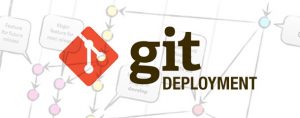
What is Git Deploy? Git is an open-source project that allows people to manage their own projects. The Git repository contains a repository of information and code that people can work on. Working on the repository is free, although there are some subscription services that offer an ad-hoc group environment. The software itself is not free, however: users pay a modest fee to have access to features that make working with the repository easier.
Basically, when you start up your Git repository, you create a new feature branch and create a sub repo by doing a pull request (see below for more details). When a developer pushes his or her branch to the main Git repository, you can then check out that branch and checkout if you want to continue working on it. If you do want to switch branches, you simply push your branch,s URL to your pull request URL. When a developer checks out another branch, he or she will create another feature branch, and the cycle begins again. For large projects with many developers, this can be a real time-saver. So how does Git Deploy work?
The basic setup looks something like this: The user creates a feature branch and pushes that branch to the main Git repository. Once the feature branch is checked out, anyone can check out the repository, and if they want to change anything, they just push a copy of their changes to their Pull Request URL. In addition, anyone can create additional branches, and the cycle is repeated. Now, when someone makes a pull request (pull request number 1), if the author has pushed any new changes, they,ll need to composer install their feature branch. The author (you) is then assigned the use of their primary repositories. The next step is for anyone to be able to read the files in your repository. This is achieved using the read command. If you,ve implemented an ORM model, then you can use the: read command in your URL configuration to access the files that were checked out in the deployment scripts.
When someone makes a pull request, they usually do it as part of a staged process. They create a feature branch and then add some extra code to their feature branch. The final step is for the code to be checked into the master (master) repository. However, before the actual commit message can be written, someone needs to create a working directory (called a staging directory). This way, if there are any issues with the code during the commit, it can be caught before it becomes committable (i.e., in your working directory).
A working directory is simply a temporary folder created to allow your developers to work on staging changes without having to commit the code to the main repository. The way that Git works is that it has its own fork of the repository that exists as a branch name. In addition, the working directory is only accessible from the master repository; nobody else can make any changes to it.